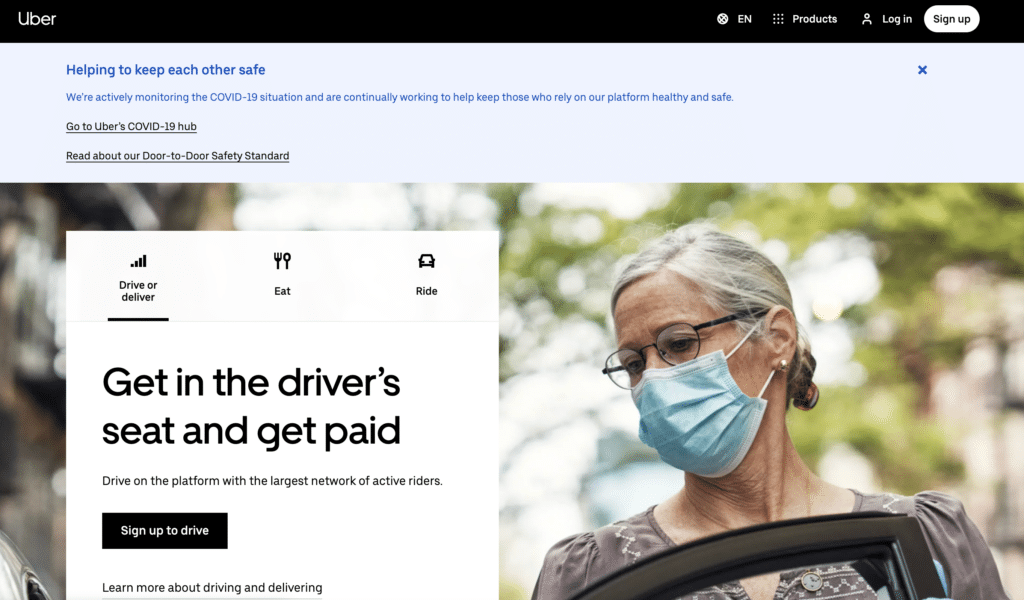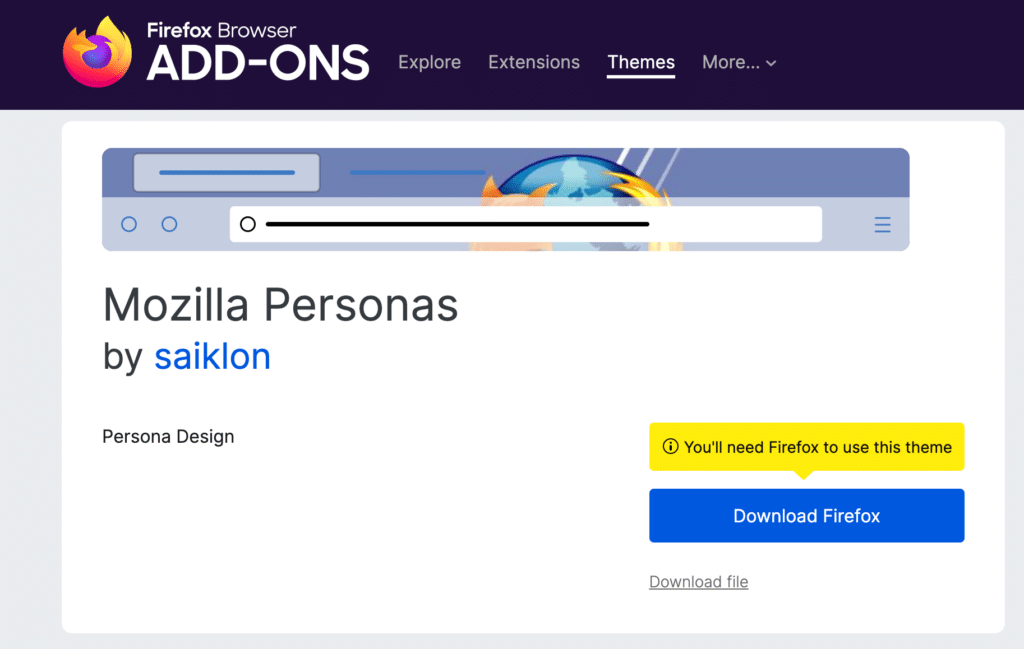Node.js has been around for a while, with many recorded testimonies of how efficient and fast it makes building and scaling enterprise-level applications. These Node.js apps by several leading tech companies solve business needs with efficient, easy, and flexible APIs.
It’s also an excellent tool for collaborative development, allowing both the frontend and the backend of a product to be developed in one language, thereby allowing a unified team of JavaScripters.
In this article, we’ll discuss ten popular types of Node.js apps with examples. We’ll also spotlight the top leading companies using Node.js to help you determine why you should use Node.js.
Let’s begin!
What Is Node.js?
Node.js is an asynchronous event-driven JavaScript runtime engine designed for building scalable network applications. It’s a fast, lightweight, efficient, and scalable development environment built with Chrome’s V8 JavaScript engine.
Node.js has shown tremendous increase and adoption among Fortune 500 companies since its first release in 2009 by Rahn Dahl.
Why Use Node.js?
Developers use Node.js primarily for non-blocking, event-driven applications and servers due to its single-threaded and real-time push architectures. It can also be great for developing traditional web application backends and APIs.
Below are few reasons why you might want to use Node.js and why it’s suitable for building apps.
Scalability
Node.js allows you to build applications that scale with the business, using microservice architecture and containerization. You can achieve scalability and flexibility with almost zero effort.
Performance
Node.js offers improved performance benefits using Chrome’s V8 Engine. It’s a high-performance system, which is why companies like Uber and others adopted it in its early version in 2009.
Microservice
The microservice nature of Node.js is a huge advantage for maintainability. If you can split a codebase into small chunks, it’s more straightforward to maintain than a single bloated codebase.
Usability
The web application development process can be optimized and sped up when using Node.js because of its microservice architecture, the ability to use one programming language in both frontend and backend, and the availability of millions of libraries through NPM to serve your exact development needs.
Top Companies Building Node.js Apps
Below is a list of popular companies running Node.js on their server to power their enterprise applications.

LinkedIn is a social media service for professional connections and career moves. It’s aimed at candidates seeking career advancement and companies looking for competitive candidates.
Linkedin started using Node.js for their mobile application only and then later migrated the entire codebase to it. They also recorded 20 times faster app speed than their previous iteration with Ruby on Rails.
Netflix

Netflix is a video streaming platform with millions of users, allowing the streaming of films and television shows using any smart device or platform.
According to Netflix, they built their user interface (UI) with Node.js because of its modularity. Netflix experienced 2x times faster startup time when using Node.js.
Uber

Uber is an international ride-hailing and transportation network application. It’s a no-brainer to realize that Uber has changed the transportation business. It is available in 85 countries and over 900 cities worldwide, completing more than 14 million daily trips.
Most importantly, Uber is also an early adopter of Node.js.
The main reasons for their adoption are because Node.js boasts ease of error-checking, superior debugging, faster processing speeds, and continuous development.
These attributes boosted Uber’s development operations, allowing them to fix errors almost immediately without restarting the application process.
PayPal

PayPal is one of the top online payment systems, providing trustworthy payment services to millions of users across many supported countries. PayPal uses Node.js to build the user-facing content portion of their application.
Node.js unifies JavaScript on the frontend and the backend of every application. Most notably, what PayPal loves about Node.js is that it helps their development processes.
According to Brainhub, Node.js has provided PayPal with a faster web application loading time, which is almost twice as fast and contains 33% fewer lines of code and 40% fewer files than their initial Java-based application.
Mozilla

Mozilla Firefox is the second most popular Web browser. Mozilla uses Node.js as their primary language, and many of their web apps use it. Mozilla Persona, for example, is a cross-platform sign-in technology built with Node.js.
10 Popular Types of Node.js Apps
Below is our handpicked list of the top 10 types of Node.js apps you can build.
Real-Time Collaboration Tools
Node.js is a powerful engine for creating real-time collaborative tools ranging from coworking apps to project management, video and audio conferencing, and collaborative document editing.
That explains why Node.js is the bedrock for many popular collaborative tools owned by big tech companies, such as Trello for project management and Slack for group chats and remote team communications.
Node.js’ asynchronous and event-based architecture provides the bedrock and fits perfectly with building and scaling collaborative applications.
Single-Page Applications
Single-page applications (SPA) are not new concepts to web development. It’s a popular buzzword describing an approach in which the entire application fits on a single page, with a better developer’s experience.
Node.js is great for SPAs because it handles asynchronous calls and heavy input/output(I/O) workloads faster and more efficiently. For the seamless transition of data between Views and the server, the Node.js event loop is allowed to “delay” multiple concurrent requests from clients, allowing for smooth processing.
Node.js is also an excellent option for building out the backend of a SPA with its data-driven approach. We can use JavaScript frameworks such as Express.js, Adonis.js, or Koa to develop a complex and data-intensive SPA backend.
Real-Time Applications
Building real-time network applications are one of the best features of Node.js. You can do it all, from building real-time chat applications such as instant messaging (IM) and internet relay chat (IRC) applications to building complex real-time applications.
Node.js provides basic features for building and deploying real-time and network applications using the Event API. It can create an object, called emitters, that emit named events periodically and can be listened to by event handlers.
Owing to its event-based architecture, Node.js works efficiently with the WebSockets protocol, facilitating real-time two-way communication between the server and the client.
Node.js has excellent WebSockets support through libraries such as Socket.io and WebSocket-node, which you can use to quickly and effectively create and deploy real-time chats in no time.
Location-Based Applications
The asynchronous nature of Node.js and its ability to provide real-time updates make it a top choice for building location-based applications.
In 2020, there was an increase in the number of location-based applications. Most of these applications use Node.js and other associated stacks because of Node.js’s features such as event-based architecture and asynchronous programming for building real-time and network applications.
Streaming Applications
Application streaming is a process of downloading parts of an application on-demand without overloading the server or the user’s local machine.
With stream API, Node.js can easily handle real-time data streams, which are the main feature of a streaming application. Node.js can also provide quick data synchronization between the server and the client, which improves user experience by minimizing delays using the Node.js event loop.
Node.js provides a readable and writable stream interface that you can use to process streams of data efficiently.
Internet of Things (IoT)
Since the rise of the IoT in 2012, Node.js has become the preferred engine for building enterprise and organization-level solutions for private and public IoT systems.
Node.js can process multiple concurrent requests and events emitted by millions of IoT devices all over the internet, which is an essential attribute of any IoT device.
Skycatch, for instance, uses Node.js to power its specialized drones that take construction site photos and turn them into 3D models — a feat that would be much more difficult to accomplish without Node.js.
Microservices Architecture
The breakdown of an application into groups of independent and modular services, each running as a unique single process, is called a microservice.
Node.js has excellent support for microservice architecture and encourages splitting large and complex applications into smaller, independent working units.
Node.js’s microservice architecture reduces development time significantly and improves the application’s maintainability, scalability, and efficiency. PayPal has shown this by leveraging Node.js to build the world’s leading online payment solution.
Complex Fintech Applications
To develop a successful fintech application, you have to be security-conscious, as fintech applications are prone to attacks by hackers.
Node.js has a dedicated Security Working Group responsible for all security and vulnerability updates, making it very secure and safe to develop enterprise-level, scalable fintech applications.
Companies such as PayPal and Capital One trust the security of Node.js in building and scaling enterprise-level fintech applications with the highest security demands.
Ecommerce Applications
Ecommerce applications also require a faster load time and a high network development language for the millions of traffics they generate.
eBay and Groupon use Node.js to develop and scale their enterprise-ready e-commerce platform, reducing the page load time to the absolute bare minimum.
Groupon recorded a 50% reduction in page load time due to moving its codebase from Ruby on Rails to Node.js.
Content Management Systems
Content management systems (CMS) are not new, even though there are tonnes of improvements in the CMS industry.
Node.js is a powerful engine for developing and scaling complex and distributed CMS applications, such as Strapi, for sharing and distributing content all over the internet.
Another popular Node.js app is Medium. As of 2019, Medium attracts nearly 200 million visits monthly, which requires a very scalable solution, and that’s what Node.js brings to the table.
Summary
We’ve discussed the ten favorite types of Node.js apps and several popular applications made with this runtime engine. You’ve also understood how and why many top leading tech companies use Node.js to power their servers.
Hopefully, that gives you some idea of Node.js’s popularity and scalability. Do consider it for developing your next application.
Do you have a project in the works using Node.js? Let us know in the comment section, and keep coding!



Leave a Reply